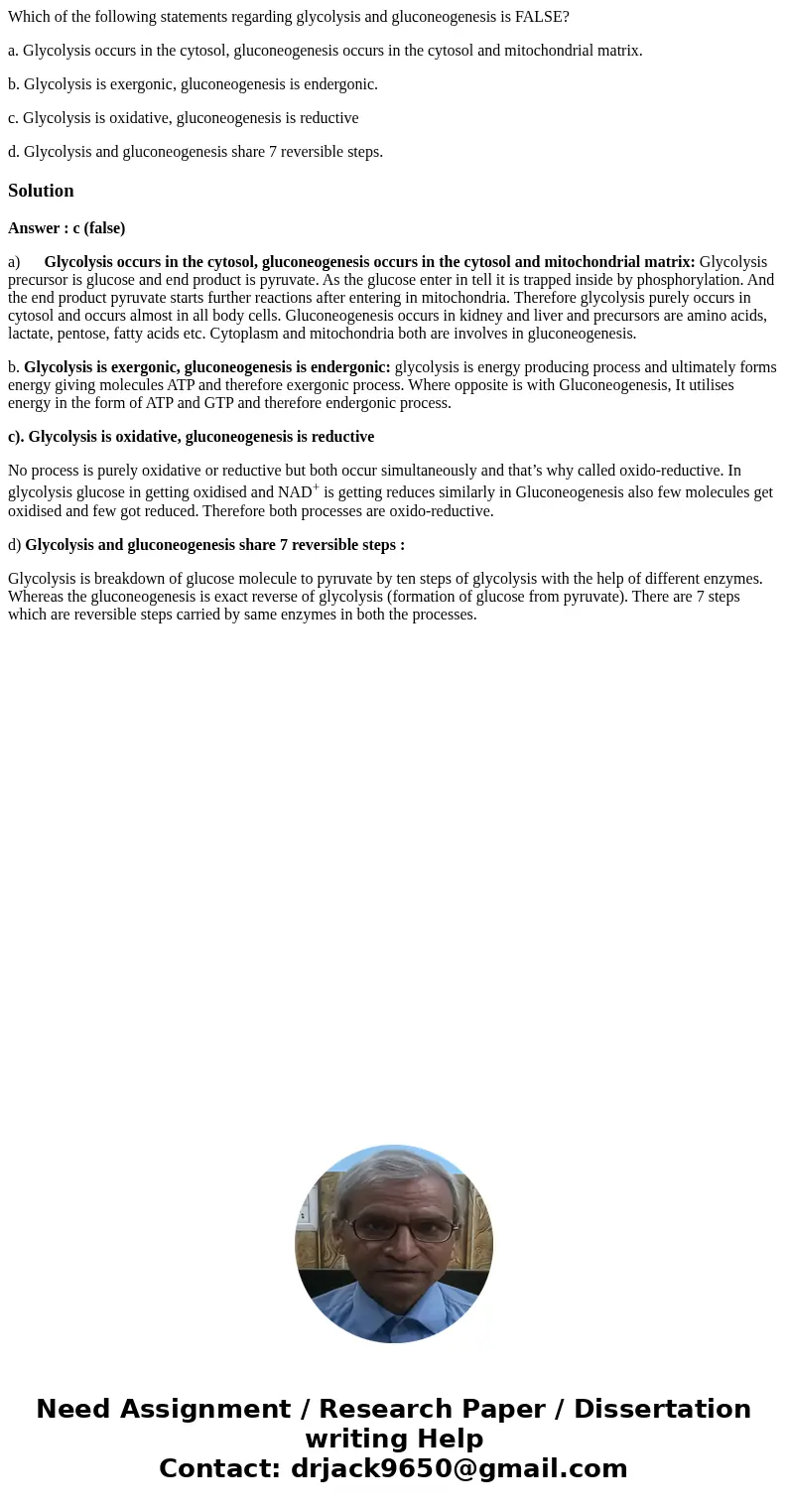Which of the following statements regarding glycolysis and g
Which of the following statements regarding glycolysis and gluconeogenesis is FALSE?
a. Glycolysis occurs in the cytosol, gluconeogenesis occurs in the cytosol and mitochondrial matrix.
b. Glycolysis is exergonic, gluconeogenesis is endergonic.
c. Glycolysis is oxidative, gluconeogenesis is reductive
d. Glycolysis and gluconeogenesis share 7 reversible steps.
Solution
Answer : c (false)
a) Glycolysis occurs in the cytosol, gluconeogenesis occurs in the cytosol and mitochondrial matrix: Glycolysis precursor is glucose and end product is pyruvate. As the glucose enter in tell it is trapped inside by phosphorylation. And the end product pyruvate starts further reactions after entering in mitochondria. Therefore glycolysis purely occurs in cytosol and occurs almost in all body cells. Gluconeogenesis occurs in kidney and liver and precursors are amino acids, lactate, pentose, fatty acids etc. Cytoplasm and mitochondria both are involves in gluconeogenesis.
b. Glycolysis is exergonic, gluconeogenesis is endergonic: glycolysis is energy producing process and ultimately forms energy giving molecules ATP and therefore exergonic process. Where opposite is with Gluconeogenesis, It utilises energy in the form of ATP and GTP and therefore endergonic process.
c). Glycolysis is oxidative, gluconeogenesis is reductive
No process is purely oxidative or reductive but both occur simultaneously and that’s why called oxido-reductive. In glycolysis glucose in getting oxidised and NAD+ is getting reduces similarly in Gluconeogenesis also few molecules get oxidised and few got reduced. Therefore both processes are oxido-reductive.
d) Glycolysis and gluconeogenesis share 7 reversible steps :
Glycolysis is breakdown of glucose molecule to pyruvate by ten steps of glycolysis with the help of different enzymes. Whereas the gluconeogenesis is exact reverse of glycolysis (formation of glucose from pyruvate). There are 7 steps which are reversible steps carried by same enzymes in both the processes.

 Homework Sourse
Homework Sourse